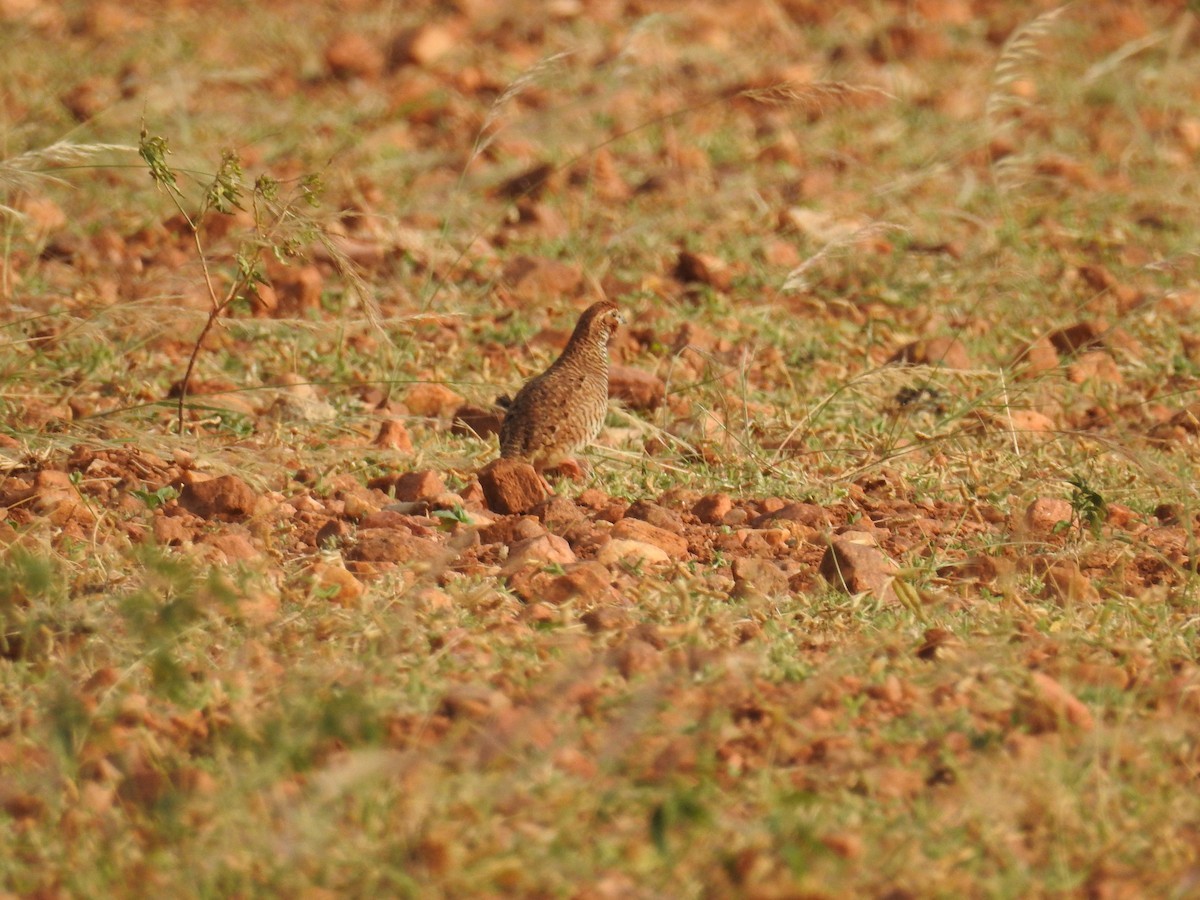Rock Bush Quail
A species of Bush-quails Scientific name : Perdicula argoondah Genus : Bush-quails
Rock Bush Quail, A species of Bush-quails
Botanical name: Perdicula argoondah
Genus: Bush-quails
Content
Description General Info
 Photo By Ashwin Viswanathan
Photo By Ashwin Viswanathan Description
The rock bush quail is very similar to and overlaps in range with the jungle bush quail (Perdicula asiatica). These birds are found in small coveys and are often detected only when they suddenly burst out into flight en masse from under vegetation. It is 6.7–7.25 in (17.0–18.4 cm) in length and weighs 2.25–3 oz (64–85 g). It is some shade of brown barred and mottled with darker colour. A diagnostic feature is that the outermost primary feather is longer than the innermost, and the inner web of the primaries is barred or speckled with buff. The voice is a trill followed by a series of piping notes which start quiet and grow louder. 
Size
18 cm
Nest Placement
Ground
Feeding Habits
Rock Bush Quail primarily consumes a diet of seeds and insects. Foraging typically occurs on the ground in their rocky habitat. They display a preference for certain seeds, which they adeptly pick with their beaks. Unique dietary adaptations include their ability to exploit scarce resources in their arid environment.
Habitat
The rock Bush Quail typically inhabits semi-desert environments characterized by arid, open plains interspersed with thorny vegetation. These birds prefer flatland areas with minimal tree cover, where the landscape is dominated by shrubs that provide cover and foraging opportunities.
Dite type
Granivorous
General Info
Feeding Habits
Bird food type
Distribution Area
The rock bush quail is native to the western half of India and is believed to be a non-migratory species. There are three recognised subspecies; P. a. argoondah found from Madhya Pradesh southwards to Tamil Nadu; P. a. meinertzhageni found in northwestern India; and P. a. salimalii found in South India in parts of Karnataka. It occurs in arid areas with scrubby grassland and thorny bushes and is seldom found above about 600 metres (2,000 ft). 
Species Status
The rock bush quail has a very wide range and is common in many parts of that range. The International Union for Conservation of Nature has rated its conservation status as being of "least concern". Although the population has not been quantified, it is probably declining slowly, as the bird is subject to hunting pressure and destruction of its habitat. The rate of decline in population is insufficient to warrant listing the species in a more threatened category. 

 Photo By Ashwin Viswanathan
Photo By Ashwin Viswanathan